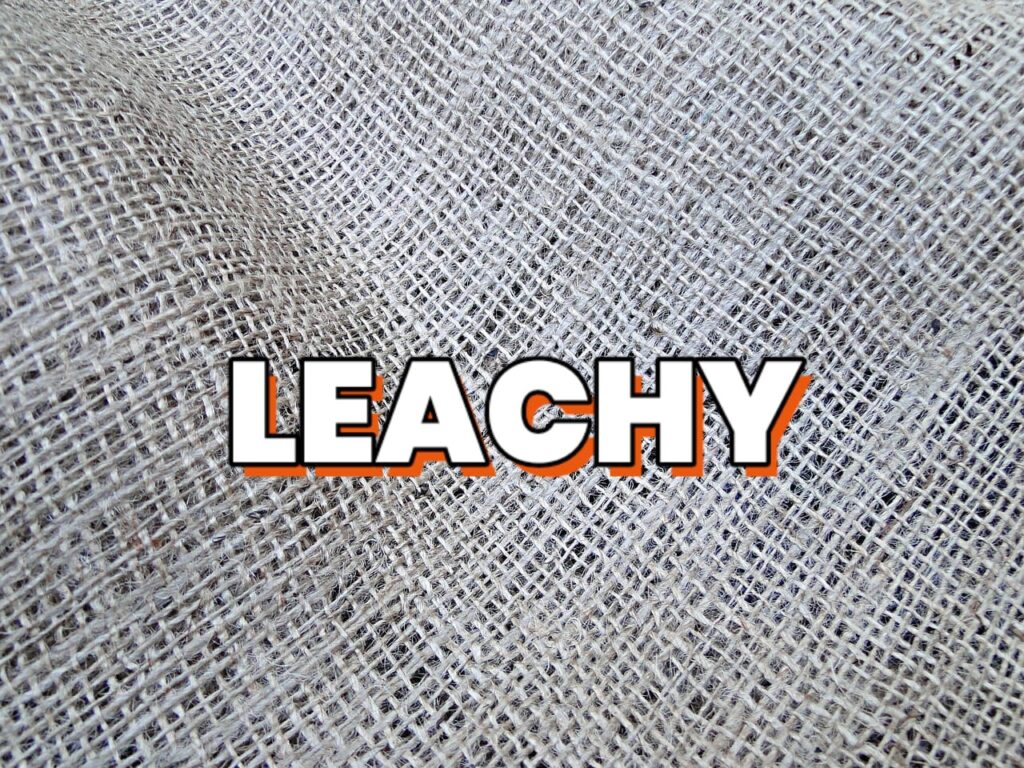When discussing soil and environmental science, the term “leachy” frequently comes up, but what does it really mean? Understanding this concept is crucial for anyone involved in agriculture, gardening, or environmental management. In this article, we’ll delve into the meaning of “leachy,” its implications for soil health and water management, and its broader significance in environmental science.
What Does Leachy Mean?
The term “leachy” describes a soil or material’s tendency to allow water to pass through it easily, a characteristic known as leachability. This property is determined by the soil’s texture, structure, and composition. Leachy soils are often characterized by their high permeability, which means they can quickly drain away excess water.
In practical terms, a leachy soil might be sandy or rocky, allowing water to move through it more readily compared to clayey or compacted soils. The term can also be used to describe other materials with similar properties, such as gravel or certain types of construction aggregates.
Characteristics of Leachy Soils
1. High Permeability: Leachy soils have a high permeability rate, meaning they allow water to flow through them quickly. This is due to the larger particle size and greater pore spaces between soil particles. Sandy soils are a classic example of leachy soils, as their coarse texture facilitates rapid water movement.
2. Poor Water Retention: Because water drains quickly through leachy soils, they tend to have lower water retention capabilities. This can be a disadvantage in dry climates where water conservation is crucial. Plants growing in such soils may require more frequent watering to maintain adequate moisture levels.
3. Nutrient Leaching: The rapid movement of water through leachy soils can also lead to nutrient leaching. Essential nutrients that plants need for growth can be washed away before they have a chance to be absorbed by plant roots. This can lead to nutrient deficiencies and affect plant health.
Implications for Gardening and Agriculture
1. Plant Growth: In gardening and agriculture, the leachy nature of soil can impact plant growth. While some plants thrive in well-drained soils, others may struggle due to insufficient water and nutrient retention. Gardeners and farmers often need to adjust their practices based on the soil’s leachy characteristics. For example, they might use mulch to help retain moisture or incorporate organic matter to improve nutrient content.
2. Irrigation Practices: Leachy soils require careful irrigation management. Since water drains quickly, it’s important to avoid over-watering, which can lead to runoff and erosion. Drip irrigation systems are often recommended for leachy soils as they deliver water directly to the plant roots in a controlled manner.
3. Fertilization Strategies: To counteract nutrient leaching, it’s beneficial to use slow-release fertilizers or organic amendments. These materials break down gradually, providing a steady supply of nutrients over time and reducing the risk of leaching. Additionally, soil testing can help determine nutrient levels and guide appropriate fertilization practices.
Also read: From Ancient Ruins to Modern Collectibles: The Evolution of Antiquità
Environmental Significance
1. Water Management: Leachy soils play a significant role in water management and environmental conservation. Their ability to drain excess water helps prevent waterlogging, which can damage plants and lead to soil erosion. However, the rapid drainage also means that these soils are less effective at retaining water for groundwater recharge. This balance is critical for maintaining sustainable water resources.
2. Erosion Control: In areas with leachy soils, erosion can be a concern, especially during heavy rainfall. Without adequate vegetation cover or erosion control measures, leachy soils can be washed away, leading to loss of topsoil and degradation of land. Implementing practices such as planting cover crops or using erosion control blankets can help mitigate these effects.
3. Pollution Management: Leachy soils can impact the spread of pollutants. Since water moves quickly through these soils, contaminants such as pesticides, heavy metals, or industrial waste can also travel rapidly, potentially reaching groundwater supplies. Proper management practices are essential to minimize the risk of pollution and protect water quality.
Improving Leachy Soils
1. Soil Amendments: To improve the water and nutrient retention of leachy soils, adding organic matter such as compost or aged manure can be beneficial. These amendments help increase soil fertility and structure, making it more capable of holding water and nutrients.
2. Mulching: Applying mulch to the surface of leachy soils can help reduce evaporation and improve moisture retention. Mulch also adds organic matter to the soil as it decomposes, further enhancing soil health.
3. Cover Crops: Growing cover crops, such as legumes or grasses, can help prevent erosion and improve soil structure. The roots of cover crops bind soil particles together and add organic matter to the soil, which can enhance its ability to retain moisture and nutrients.
Conclusion
Understanding what “leachy” means and its implications is vital for effective soil management and environmental conservation. Leachy soils, with their high permeability and rapid drainage, present both challenges and opportunities. By adopting appropriate practices and strategies, gardeners, farmers, and environmentalists can work to optimize soil health, manage water resources, and minimize negative impacts on the environment.







